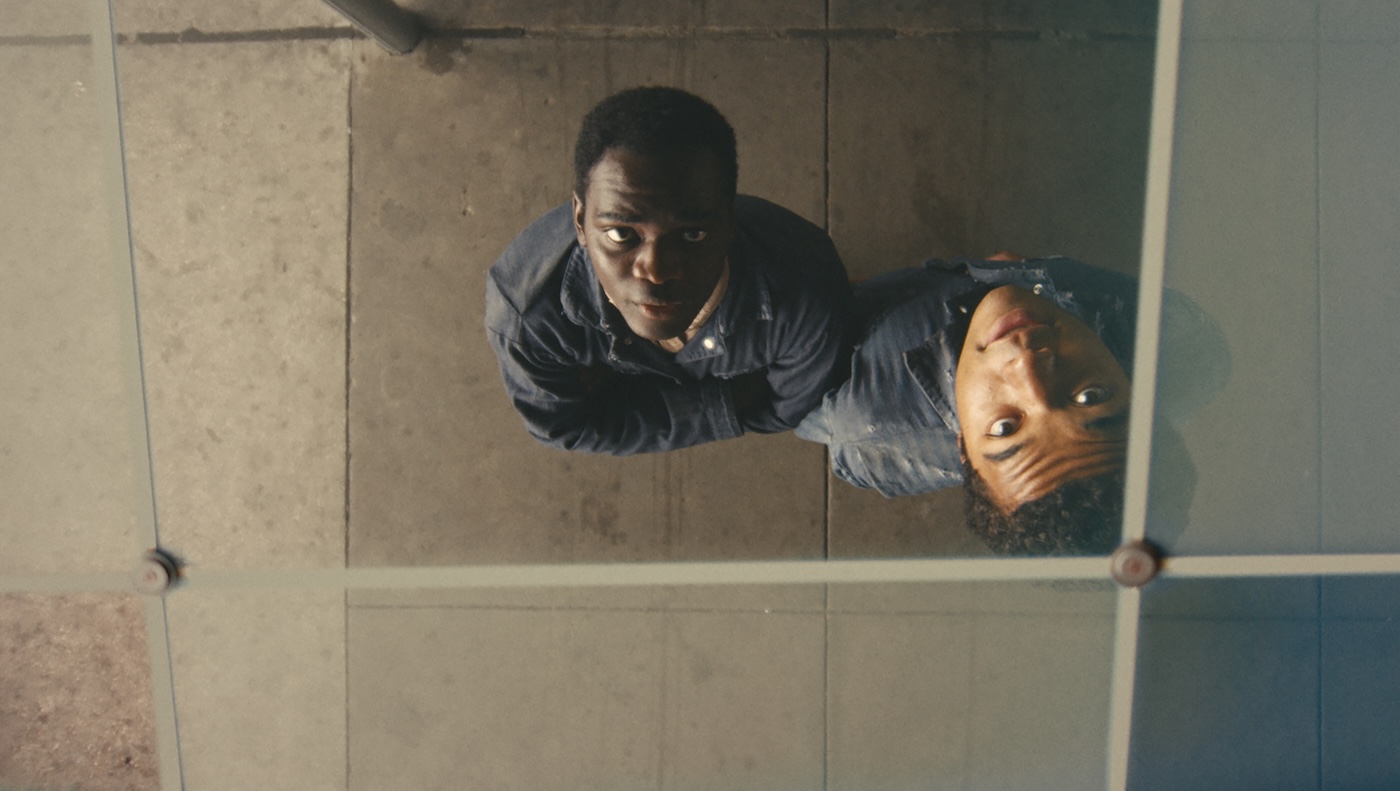
“Every aspect of the visual language that we built always came from being rooted in the script,” cinematographer Jomo Fray tells The Credits about director RaMell Ross’s moving film Nickel Boys.
Adapted from Colson Whitehead’s Pulitzer-winning novel of the same name, the screenplay, co-written by Ross and Joslyn Barnes, follows the blooming friendship between two black teenagers – Elwood and Turner – as they’re forced to attend a reform school in the Jim Crow South during the Civil Rights Movement. In photographing the imagery, Fray and his director framed the story through a first-person viewpoint, a technique that intimately connects the audience directly to the narrative as if they were the characters. The decision greatly influenced the cinematographer’s approach to composition and lighting.
“We didn’t want to just show some events that were happening,” says Fray. “We wanted to invite the viewer to have the bravery to ask themselves, not just, wow, this is some really tough stuff happening to Elwood, but to ask themselves, what would I feel if I was in this situation?” The result is a camera language that viscerally immerses you in the magnetism of the characters as you walk step by step with them through their emotional journey.
With the novel being such an impactful piece of literature, was this project an automatic yes for you?
You know, it was an automatic yes for me. Before I had even started the script, RaMell Ross, the director, was someone I was so completely and utterly enamored with after seeing Hale County This Morning, This Evening. That movie really just completely had me sitting in awe when the lights came up. I truly had this feeling where I needed to meet the person who made this work. I needed to talk to the image maker behind it, so when the request came in for Nickel Boys, on RaMell’s name alone, I was like, I’m in.
In terms of developing the visual style, what came from those first conversations with RaMell?
In our first conversation, he was like I want this movie to be from a first-person perspective. Just the boldness of that choice was so exciting to hear as an artist because, truly, I feel like the scripts that get me the most excited are the ones that I can’t pre-visualize when I’m reading them.
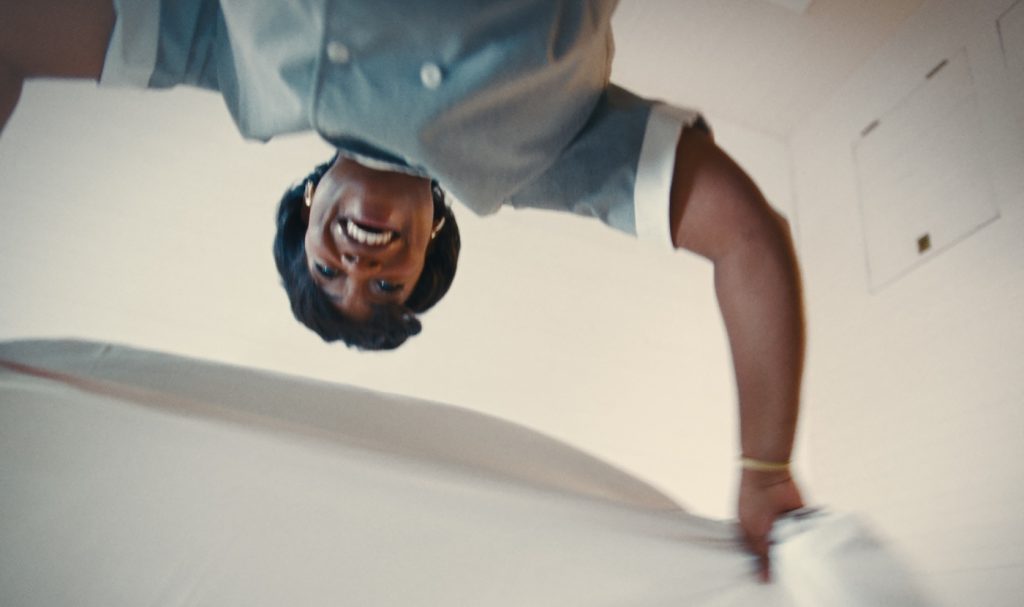
What considerations went into developing the first-person camera language?
Something that helped RaMell and I is that early on in prep, we actually almost stopped using the word first point perspective or first person or POV. The way that he and I described the image to ourselves is that we wanted a sentient image. By that, we wanted an image that felt like it was connected to a real body inside the scene and a real body that was navigating a dangerous time for them.
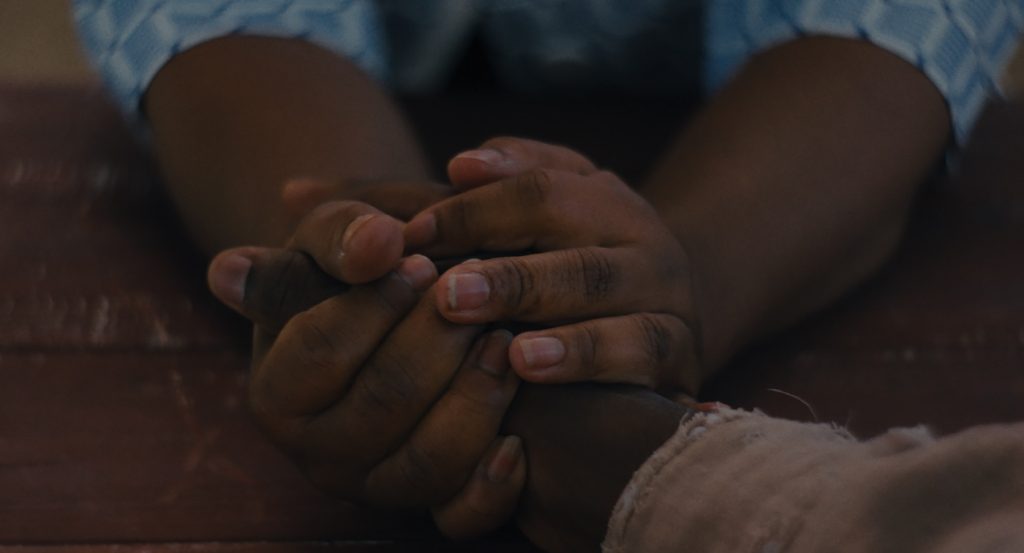
So, how did the viewpoint influence the camera blocking and framing?
It was a lot of conversations with RaMell in prep, going through the script line by line, moment by moment, beat by beat, and asking ourselves, whose perspective is it taking place from? And what is their feeling? What is the emotion we’re trying to draw out of something that they’re feeling? And as an audience, how do we feel about what they’re feeling? And then what’s an establishing shot? What’s a cut? What’s a transition?
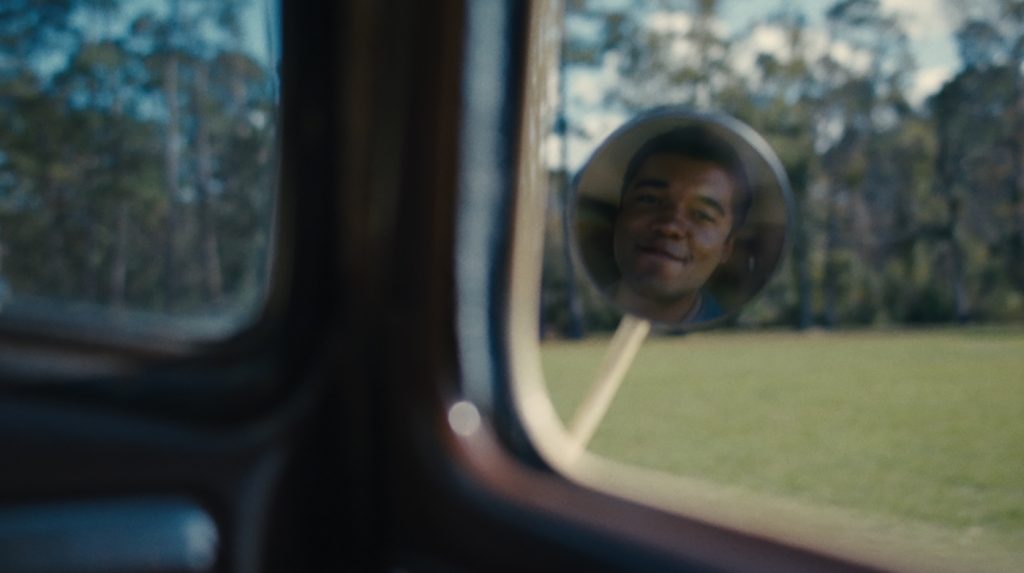
So, for example, in the place of not having a traditional establishing shot, what does the image mean when maybe it’s a wider image of a space? What are the socioeconomics of the space? What are the socioeconomics of the person whose eyes I’m seeing? And what’s the juxtaposition between their socioeconomic position and the socioeconomics of the space? And are they comfortable in that space?
Did shot list help imagine scenes, or did you approach them more organically on set?
RaMell and I spent hours and hours building a meticulous shot list together, where we designed every scene as a one-er, knowing we would cut in post. We didn’t give any of the actors marks, and we would constantly try to find ways to make it feel real and grounded for the performers and ourselves. To try to get an image that had some real immediacy to it was ultimately what we were after.
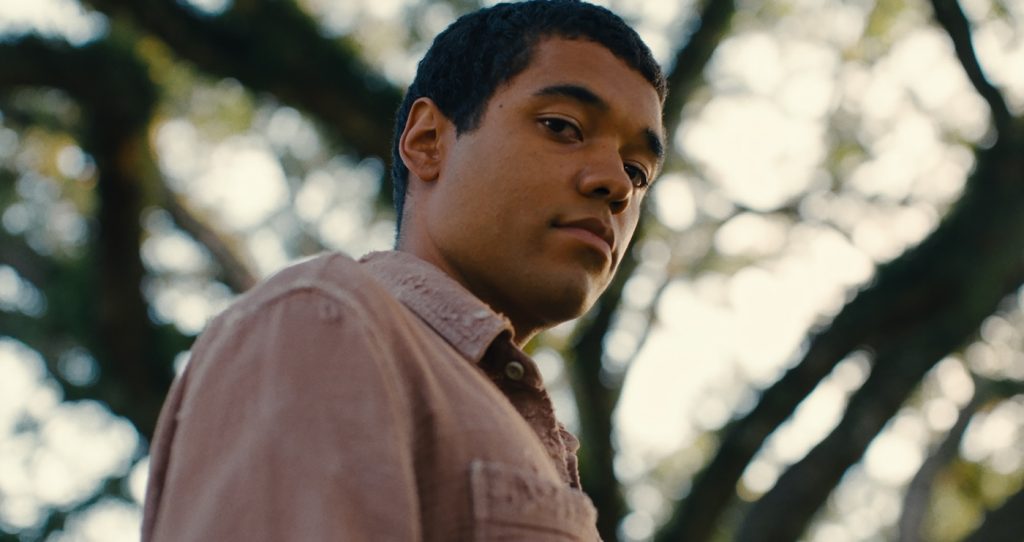
What was the approach on a technical level?
In prep, we would have a DSLR when we were shot listening together, and we would just try things out. We also did a lot of camera tests and tried hard almost to unlearn what we knew about certain camera systems to ask ourselves, what does this feel like? And then our key grip team, led by Gary Kelso, needed to build custom rigs for some of the shots. Since we were doing each scene as a one-er, it meant that essentially every single shot of the movie was a trick shot, so we had to have a bespoke system to be able to run the entirety of every scene. Sometimes, that was handheld. Sometimes, that was having a camera on a bungee apparatus. Other times, it was a body rig. Oftentimes, it was a remote camera head that I would use in mimic mode. So that way, the remote camera head could sit in front of the actor, and in another room, I could be doing handheld and look down at my body, and the camera would look down and see the actor’s body on set.
What brought on the idea to film Nickel Boys in a 4:3 aspect ratio?
Things like the aspect ratio, the use of telephoto lenses, and the use of shallow depth of field were our attempts to try almost to create the illusion of selective focus. We wanted to make an image that felt like the way the brain takes in knowledge in a space and then creates more information by the way those things juxtapose each other.
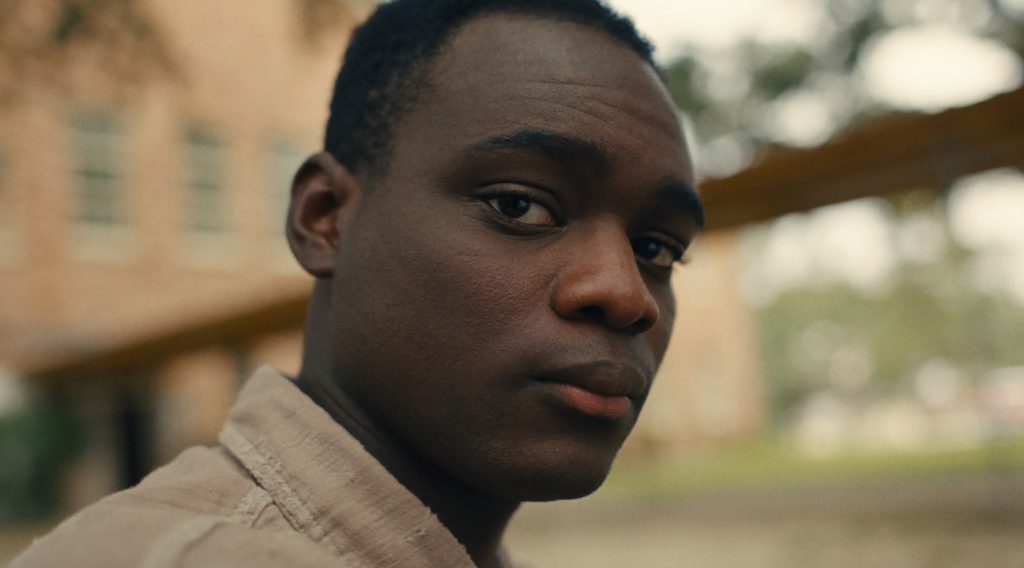
One emotional element you captured so well was breaking from the viewpoint to show us the character, whether that was through a reflection or breaking the fourth wall. What went into finding those shots?
There was a moment on set for RaMell and me on the first day that Aunjanue Ellis-Taylor came to set. The scene in particular is where her character, Hattie, talks to Elwood and tells him some news that is hard for her to say. When I was operating the camera as Elwood’s gaze at that moment, I remember right before she’s going to tell this news I sensed she’s about to say something she doesn’t want to say. So the camera as my eyes drifted away with the lens. There was a pause, and Aunjanue, completely off script, touched the table and said, Elwood, look at me, son. And there was a way in which the camera had to float back. It had to meet her gaze. And Hattie looked into my eyes as Elwood delivered that news.
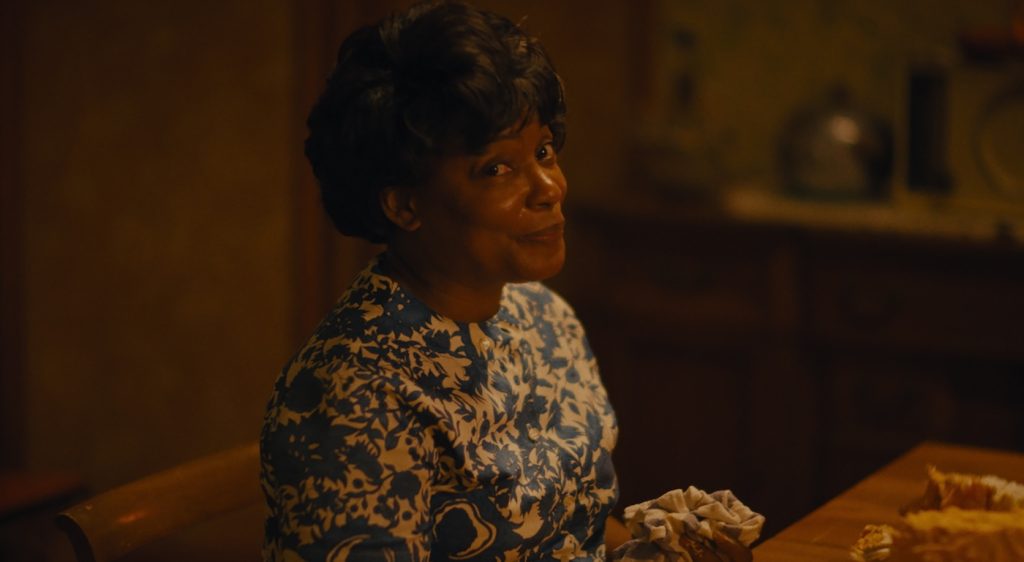
When we first saw that take, I think we yelled cut, and he and I ran back to the monitor, and it was like, oh, this is what POV is. This is what an ascension camera is. It’s that the camera itself has to be a scene partner to the actors. It has to be present in the scene, and if an actor changes what they’re going to do, the camera language has to change to meet it. I think that was an explosive moment for the two of us because it changed how we connected with the image.
This article was first published on The Credits